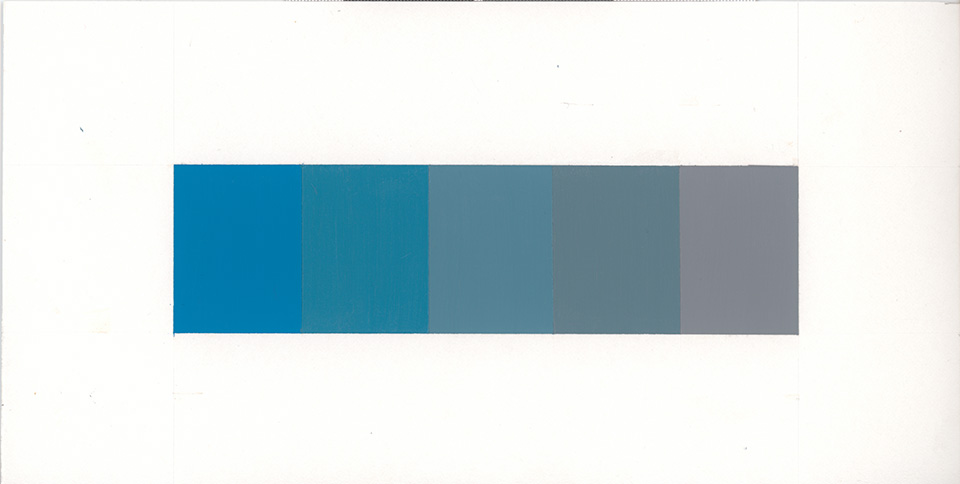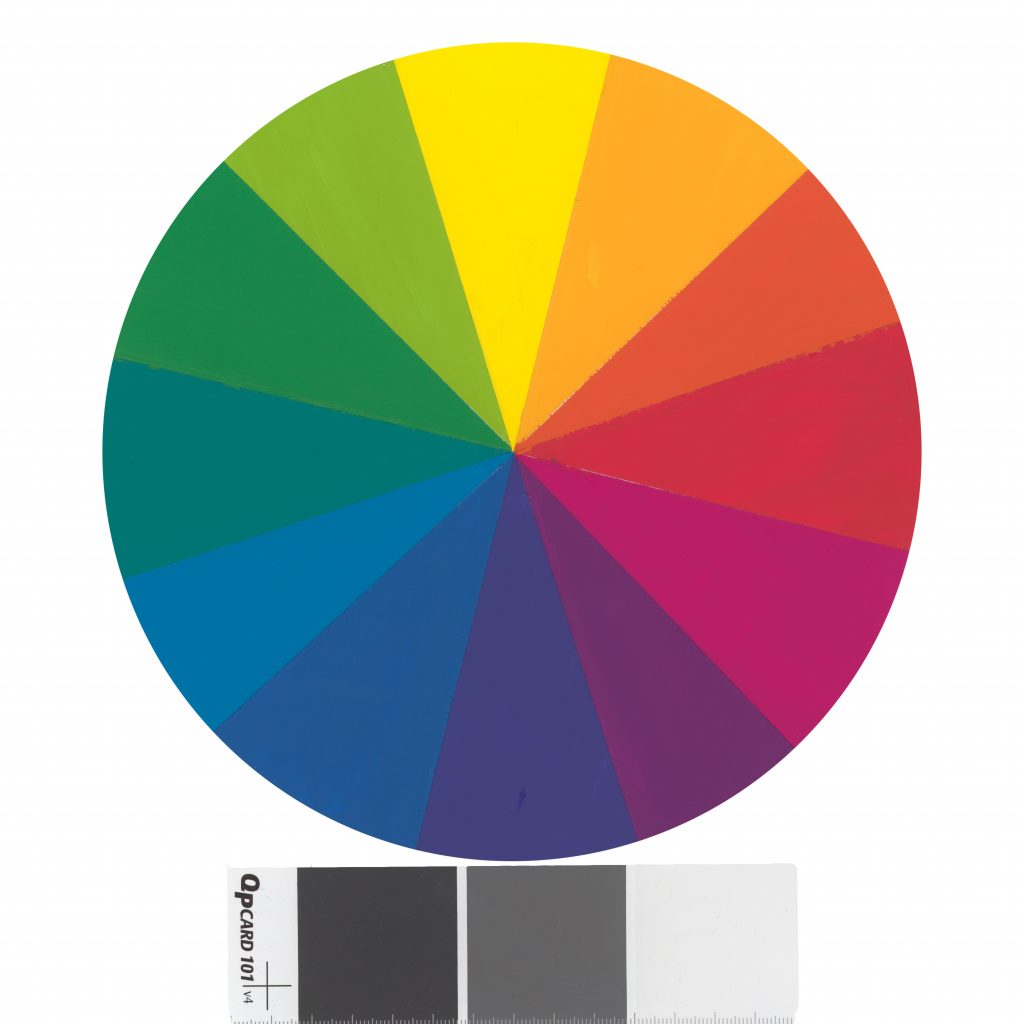The trickiest part of the tone scale was creating a color (gray) without saturation, with the equivalent tone of a color with saturation. Creating the gray with paints was also a learning experience because I was surprised by how much black paint was required. Finding the medium between “too light” and “too dark” required over 8 mixing attempts. I wonder what the process would’ve been like if I started with the black paint first and then added white paint.
Creating the paints for the tone scale was interesting because as I was mixing them, the colors with more saturation at first glance seemed “brighter” and therefore, looked to have more value, but once I completed the scale, I can see that the values are the same. Each color required the same number of layers of paint to look fully coated.




